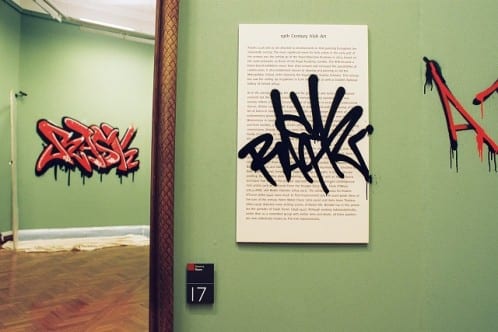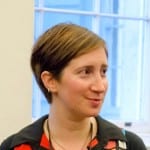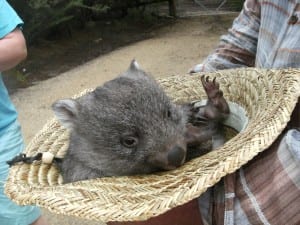What is bread?
By Stacy Hackner, on 16 March 2015
When I started my research on the 9000-year-old bread from Çatalhöyük (Turkey) I began to wonder about bread related facts that we hear on daily basis. Many questions came to my mind: what do we understand by bread? How many types of bread are there? Is bread the base of every diet around the world? Is bread good for us? I realised most of these questions were mainly related to things that people believe to be true more than to real scientific evidence.
For instance, when I asked my friends or family what they think bread is, they all gave the same type of answer: bread is something made of wheat that we eat every day; bread is the base of our diet. However, that is not completely true. Bread is not equally understood by everybody or every society in the world. While for the majority of the European society, bread normally refers to a leavened and baked food made of wheat flour, water and salt, for a person belonging to a South American or Indian community that definition might seem rather limited and incomplete. Depending on the area of the world we are, bread would mean very different things for the people living there. There are two factors to consider when looking into this: the local plant resources available in the different areas of the world and the cultural implications of bread such as cooking traditions, identity or cosmology.
As part of my experience as a Research Engager at UCL, explaining what I understand by bread is not an easy task. When they ask me what my doctoral research is about and I answer that I study archaeological bread from Turkey, I can see the look on the visitor’s faces. However, that look is mainly the result of preconceived notions I have mentioned earlier. As a consequence, my immediate response would be: “What I mean by Bread is not what we buy in Tesco!”, however there is a good reason for this bias: the majority of visitors are likely to have been brought up in Europe or the so called Western Societies where bread is considered to be a baked and leavened flour preparation. From the plant resources point of view, there are basic differences on the ingredients that people chose to make bread. We actually find that they vary quite a lot among the different areas of the world. While in Europe our bread products are mainly made of wheats species, in places like Africa, Asia and Central and Southamerica other plant resources are primarily consumed in bread form. Many diverse types of bready preparations are made of local plant species being millets in Africa and West and South Asia, rice in South-East Asia and corn (maize) in the New World the main ones.
At this point of the engagement, if the botanical explanation has not helped to sustain my point yet, here is when I use the cultural explanation exposed by Dorian Fuller, Professor in Archaeobotany at UCL, and Michael Rowlands (2011) who have defined the Bread Culture. According to these researchers, by looking at the archaeobotanical and archaeological record, we can distinguish two marked areas in the world in relation to bread products. They propose a clear frontier which would separate bread cultures from those which cannot be characterised as such. We see a cultural area formed by the Mediterranean, North Africa and West Asia, where wheat and barley species started to be cultivated 11000 years ago, where grinding stones and milling tools have been recovered in high quantity and with evidence of milling traditions from the Epipaleolithic. On the other hand, we see a completely different area of the world where bready products have not been present until modern times. South East Asia, with China as the centre, presents a distinctive pattern that varies from the Western world. The communities on these areas did not base their diet on cereal but they did on rice and millets (7000-6000BC). Then is when the look on the faces of visitors at the UCL museums really starts to make sense to me: We live in the Bread Culture! We are part of it!
Now is when my task as a defender of the deconstruction of the term bread is to explain to visitors that many types of cereal foods should therefore fall in the category of bread. For example if we were in Ethiopia, bread would mainly made of teff and it would not contain yeast or any other raising agent. However, if we were in China, rice cakes and millet noodles would be considered the ‘bread’ of the society and the base of our diet. Also, these types of breads would be differently cooked. Here is when we get into the diversity of bread making. Retaking Fuller and Rowland’s (2011) arguments, while in Western Europe we see a cooking tradition with main focus on baking and grilling, which would have relation to a cosmology in which the smoke and fumes feed the Gods; in South East Asia we see a boiling and steaming tradition. This would be directly connected with a cosmology around the ancestors, in which the descendants’ aim is to keep these close to them, the same way boiling and steaming are cooking traditions which keep ingredients together (Levi-Strauss).
After this explanation, I start to see that some of the visitors start to see bread with other eyes and ‘engage’ in a conversation about how food is differently understood in different parts of the world and in different periods of History. Then is when I feel I have reached my target as a research engager at UCL: I have created an exchange of ideas and thoughts that benefit my research, and hopefully I will have made people wonder and think the next time they choose to buy baguette or pita bread!
Sources
Fuller, D. Q. & Rowlands, M. 2011. Ingestion and Food Technologies: Maintaining Differences over the long-term in West, South and East Asia. In: Wilkinson, T. C., Sherratt, S. & Bennet, J. (eds.) Interweaving Worlds: systematic interactions in Eurasia, 7th to 1st millennia BC. Oxford: Oxbow Books.
 Close
Close








